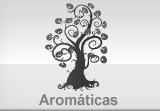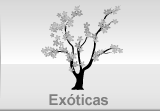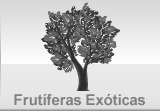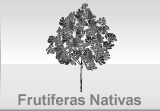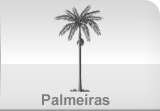Os dias começam a tornarem-se mais curtos, a temperatura diminui, os ventos aumentam e a quantidade de chuva é muito menor que no verão. Estas são as características do clima do outono. As plantas se preparam para o “estado de dormência”. Por essa razão, é necessário tomar alguns cuidados com o jardim.
Adubação
A adubação é outro fator importante. Ela irá repor os nutrientes necessários para que a terra se torne o ambiente perfeito para o crescimento das plantas e poderá seguir de forma leve, servindo como uma complementação.
Adubação orgânica
Época perfeita para se fazer essa adubação orgânica no gramado e para isto pode se utilizar húmus de minhoca, composto orgânico, turfa ou substratos próprios para gramado encontrados em lojas especializadas. Antes de se fazer a aplicação da matéria orgânica pode-se fazer furos no gramado com um garfo grande, o que fará com que o substrato entre mais fundo, atingindo as raízes da grama, descompactando o solo e levando oxigênio, nutrientes e microorganismos benéficos até as raízes.
Adubação mineral
Após a aplicação da matéria orgânica,fazer uma adubação com adubos granulados (4-14-8) ou em pó, com micronutrientes e regar em seguida. Na adubação mineral via solo utilizamos normalmente adubos granulados ou em pó. A forma e o local de colocação destes adubos nas plantas influencia diretamente o resultado. Vamos separar as plantas do jardim em quatro categorias:
Árvores– Deve-se colocar o adubo mineral na projeção da copa, a poucos centímetros abaixo da terra (2 a 5 cm). A água é o veículo que leva os nutrientes para as raízes das plantas.
Arbustos– Deve-se colocar o adubo afastado de 10 a 50 cm do caule. Essa grande variação se dá em função do tamanho dos arbustos, sendo que os de pequeno porte coloca-se o adubo mais próximo e os de grande porte colocamos os adubos mais distantes.
Forrações– Coloca-se o adubo entre as plantas de forma uniforme, sabendo que esta distribuição é normalmente a lanço (manualmente). Após a aplicação, regue, evitando, assim, que o adubo fique nas folhas e queime as plantas.
Gramado– Fazer a distribuição do adubo a lanço seguindo a recomendação do fabricante do adubo. Após a aplicação, regue, evitando, assim, que o adubo fique nas folhas e queime as plantas.
Irrigação
Com o final do verão e a diminuição do calor, a quantidade de água das regas deve ser diminuída, pois a evaporação no outono é menor. Por outro lado, as plantas estarão entrando num período no qual as chuvas diminuem e o solo passa a ficar mais ressecado. Uma ótima medida é aproveitar para incorporar à terra elementos com ação hidrorretentora, ou seja, que absorvem e mantém a umidade na quantidade certa.
Podas
Nada de podar plantas que vão florir no inverno ou início da primavera, pois sua floração pode ser prejudicada.
Podas de formação: não são recomendadas, a não ser que a planta apresente um crescimento excessivo que possa prejudicar o seu desenvolvimento.
Podas de limpeza: época ideal, recomenda-se retirar as folhas amareladas e galhos secos para favorecer a penetração dos raios solares entre os galhos da planta. Essa poda de limpeza é especialmente indicada para as cercas vivas. Após a poda de limpeza, pulverize-a com um fungicida, o que reduzirá significativamente o aparecimento de doenças.
Combate a pragas e doenças
No outono, deve-se observar mais frequentemente o surgimento de doenças foliares, geralmente associada a queda das folhas. Identifique-as e combate-as antes que elas se alastrem pelo jardim.
Dica: Ter sempre dois pulverizadores, um com fungicidas (para as manchas foliares) e outro com inseticida (para insetos), sempre a pronto uso (pode ser aqueles pulverizadores manuais). Sempre que detectado alguma praga ou mancha é só aplicar e controlar.
Sugestão de produtos: Fungicida – Calda bordalesa ou Forth cobre e para Pragas( pulgões, ácaros e etc) – Perfection.
Cuidados Gerais
As regas devem ocorrer no período da manhã e de forma espaçada. Somente as plantas que ficam em áreas internas devem seguir o padrão de rega existente. Ótimo período para colocar o jardim em dia, retirando ervas daninhas, fazendo a poda de limpeza e tratando as plantas doentes.








